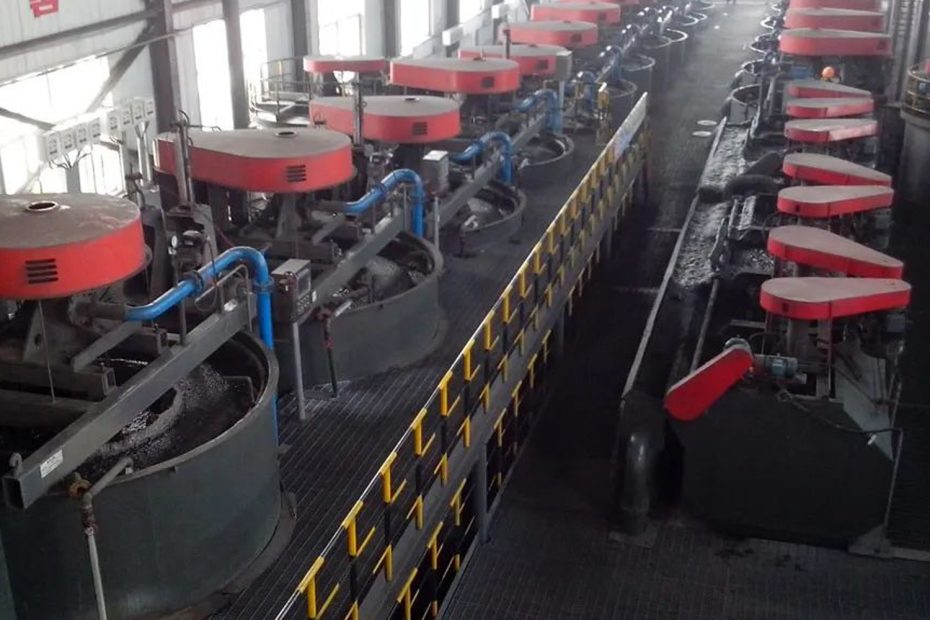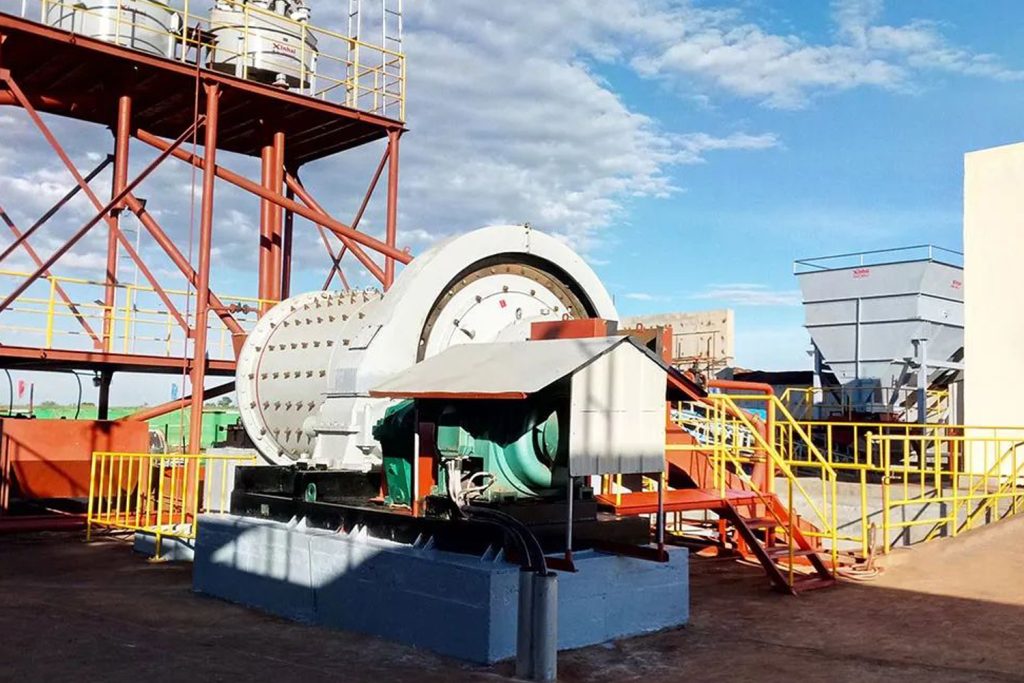Pegmatite lithium ore is an important lithium resource. In pegmatite-type spodumene deposits, spodumene coexists with silicate minerals such as feldspar, quartz, and beryl. These minerals have similar surface physical and chemical properties, and it is difficult to separate them. Flotation is a common method for selecting pegmatite spodumene.
Factors Affecting Flotation of Pegmatite Spodumene
The factors affecting the flotation of pegmatite-type spodumene mainly include grinding fineness, ore slime and floating impurities.
Factor 1#: Grinding fineness
During the flotation process of pegmatite-type spodumene, the coarse-grained minerals of spodumene are difficult to float. When the particle size of spodumene is around 0.2mm, its flotation recovery rate is low. Generally, the flotation particle size of pegmatite-type spodumene is below 0.15mm, and the specific value should be determined with the change of spodumene intercalation particle size.
Factor 2#: Slime and floating impurities
When the surface of pegmatite-type spodumene ore is polluted by weathering or mud, the floatability of spodumene minerals becomes poor. In production practice, it is necessary to set up desliming operations before flotation of spodumene minerals or give priority to flotation of easily floatable impurities.
Flotation Technology of Pegmatite Spodumene
At present, the flotation process used for pegmatite-type spodumene mainly includes direct flotation process, pre-deliming flotation process, and stage grinding stage flotation process.
Process 1#: direct flotation process
The distribution of lithium minerals in pegmatite-type spodumene is uneven, and some lithium minerals may be lost with the removal of slime. In order to recover this part of lithium minerals, the process of direct flotation can be adopted. First, reverse flotation is carried out to remove gangue minerals such as sulfide ore, mica and quartz, and then spodumene flotation is carried out to obtain better spodumene flotation. Choose an effect.
Process 2#: Pre-de-sliming flotation process
Pegmatite-type spodumene is easy to produce slime, which affects the flotation of target minerals, mainly in affecting the viscosity of the slurry, consuming a large amount of chemicals, polluting the surface of spodumene mineral particles, and activating gangue minerals. Therefore, for complex spodumene ores with high degree of weathering and severe mudification, pre-deliming-flotation spodumene process can be used for sorting.
Process 3 #: stage grinding stage flotation process
The distribution of pegmatite spodumene is not uniform, and the floatability of spodumene minerals with different particle sizes is also different. Among them, coarse-grained spodumene with a particle size of 74-38 μm has better buoyancy, while among gangue minerals, finer-grained spodumene below 38 μm has better buoyancy. Therefore, the over-grinding of gangue minerals can be reduced by means of stage grinding and stage flotation, so that the floatability of gangue minerals can be reduced.
Flotation agent for pegmatite type spodumene
1 spodumene collector
Spodumene flotation collectors mainly include the use of single collectors and combined collectors. Single collectors can be divided into cationic collectors for reverse flotation and anionic collectors for forward flotation. Cationic collectors are generally amine collectors, and dodecylamine is a more commonly used collector, which is mainly used for reverse flotation of quartz, mica and other gangue minerals in roughing operations. Anionic collectors are generally fatty acid and its soap collectors, including oleic acid, sodium oleate, naphthenic acid soap, oxidized paraffin wax soap, etc.
The spodumene combined collector can exert the synergistic effect of various agents to obtain the ideal flotation capacity index. Common combined collectors include sodium oleate + oxidized paraffin soap, oleic acid + naphthenic acid + fuel oil , Oxidized paraffin soap + xamic acid, oxidized paraffin soap + naphthenic acid soap and so on.
In addition to the above commonly used collectors, there are also a large number of new collectors for spodumene flotation, such as YOA-15, YZB-17, and other chelating collectors.
2 spodumene regulator
Since the buoyancy of spodumene and gangue minerals in pegmatite-type spodumene is similar, it is necessary to expand the difference in buoyancy between spodumene and gangue minerals by adding regulators. The regulator of spodumene flotation is mainly “three alkalis”, including sodium carbonate, sodium hydroxide and sodium sulfide. In addition, there are newer inhibitors such as disodium edetate.
In summary
The above is about the flotation of pegmatite spodumene. In actual production, it is necessary to carry out mineral processing tests on specific ore samples to further determine the actual production process and pharmaceutical system, avoid unsuitable technical processes leading to unsatisfactory indicators, and reduce economic losses and waste of resources.

